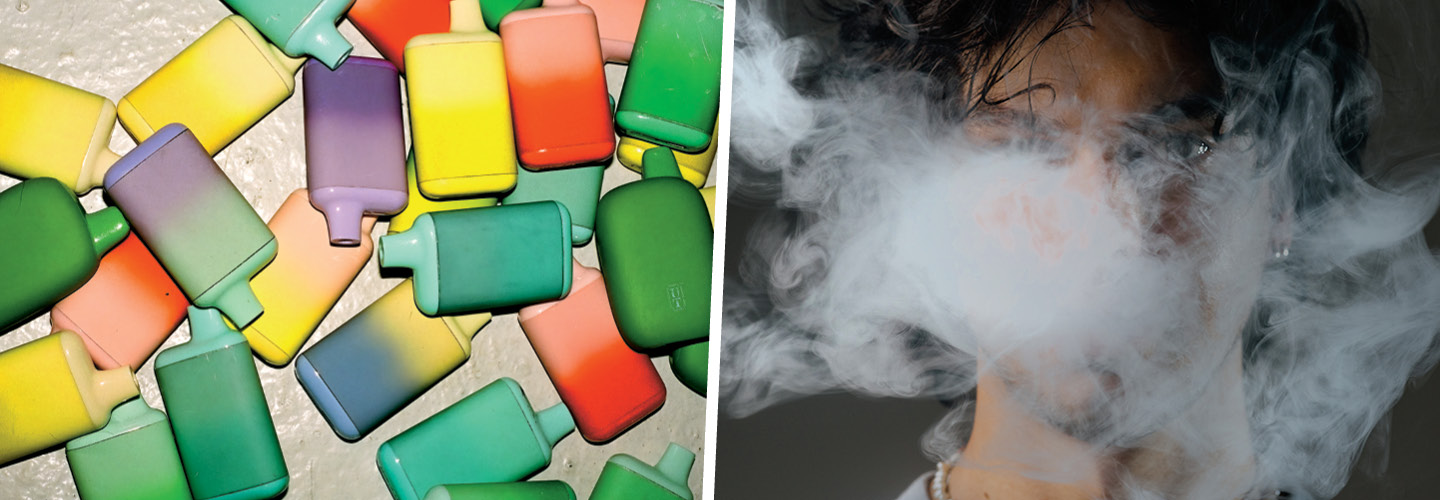Alexa Addison, 19, remembers what vapes looked like when she was in high school. The dominant e-cigarette was Juul, a slim black rectangle that resembled a flash drive.
By the time Addison started college at the University of North Carolina Wilmington last year, the vape du jour had shifted. Many of her classmates were brandishing Elf Bars, brightly colored e-cigarettes with gently sloped chimneys for inhalation.
She bought flavors like piña colada and strawberry-kiwi, and snapped photos when the candy-colored devices matched her outfits. Soon she was going through an Elf Bar a week. Each one contains the nicotine of 590 cigarettes, according to one estimate. Eventually, her gums turned gray.
“They looked really pretty, honestly,” Addison says of the devices. “I just never had an interest in vaping until the pretty ones started being sold.”
About five years after Juul became many people’s mental image for the word vape, e-cigarettes are getting another facelift. The understated look associated with Juul has been edged out by the rounded, vivid designs of Elf Bars and other brands, whose colors often correspond with their flavors.
Alexa Addison, 19, remembers what vapes looked like when she was in high school. The main e-cigarette was a slim black rectangle that resembled a flash drive. It was called Juul.
By the time Addison started college at the University of North Carolina Wilmington last year, the most popular vape had shifted. Many of her classmates were using Elf Bars, brightly colored e-cigarettes with gently sloped chimneys for inhalation.
She bought flavors like piña colada and strawberry-kiwi. She took photos when the candy-colored devices matched her outfits. Soon she was using an Elf Bar a week. Each one contains the nicotine of 590 cigarettes, according to one estimate. Her gums started to turn gray.
“They looked really pretty, honestly,” Addison says of the devices. “I just never had an interest in vaping until the pretty ones started being sold.”
It has been five years since Juul became what many people picture when they hear the word vape. Now e-cigarettes are getting a facelift. The understated look associated with Juul has been changed to the rounded, vivid designs of Elf Bars and other brands. The bright colors often represent the flavors.

